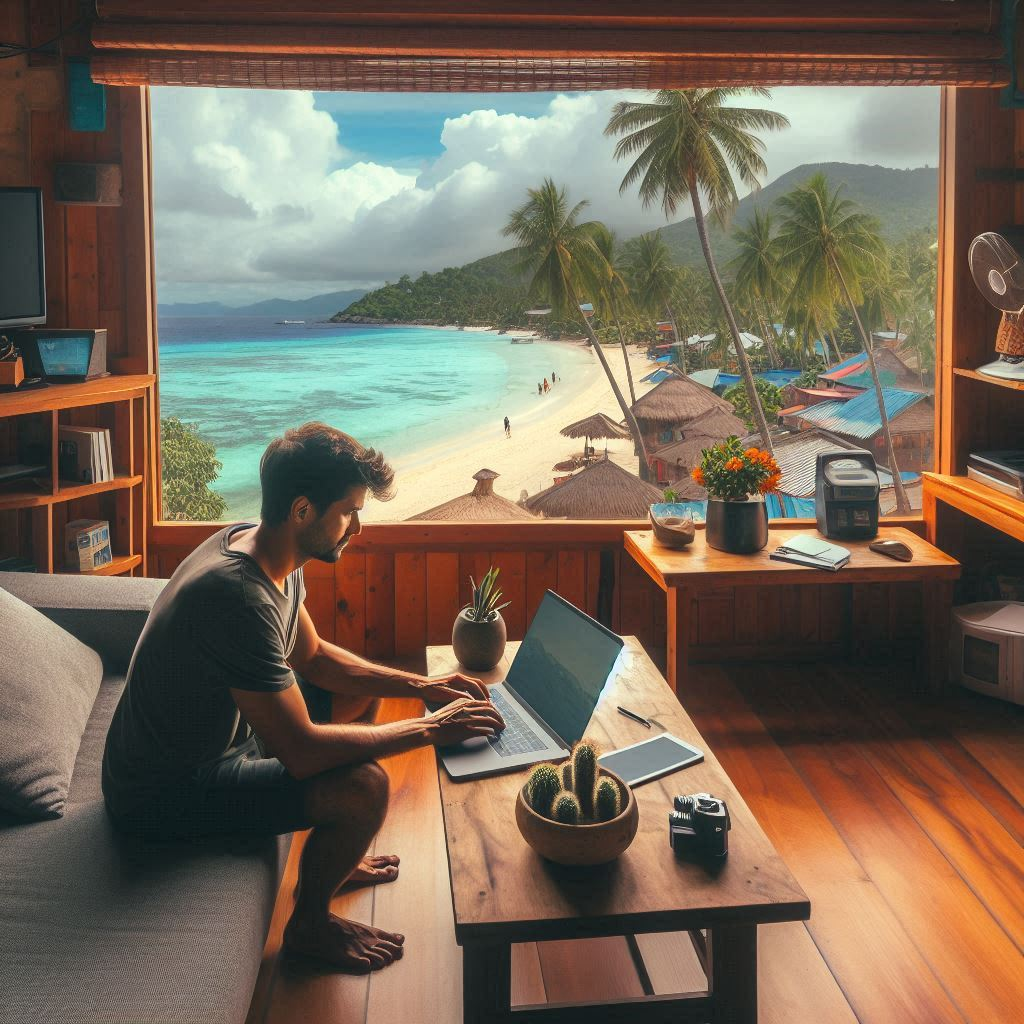With the growing popularity of remote work, the Philippines has become a desirable location for digital nomads searching for a balance between work and leisure.
For those wishing to mix work with adventure, the Philippines provides a unique experience with its stunning scenery, low cost of living, and dynamic culture.
Let’s study the fit of the Philippines for digital nomads by looking at some key components of this way of life.

Is the Philippines Good for Digital Nomads?
- Cost of Living
The Philippines’ low cost of living helps digital nomads to stretch their budgets while still enjoying a good standard of living, which is one of the main reasons why they are moving there in massive numbers.
When it comes to necessities like lodging, food, and transportation, the Philippines offers considerably cheaper prices than Western countries and other well-liked locations for digital nomads.
In this case, depending on location, a cozy one-bedroom apartment in the city center can cost as little as $300 to $500 per month.
Eating out is also reasonably priced; a dinner at a nearby restaurant should only set you back $2 to $5.
Because of its cost, digital nomads may live comfortably without sacrificing their lifestyle, which draws people who want to increase their income to the Philippines.
Obtain a Digital Nomad Visa for the Philippines – CLICK HERE
Internet Connectivity
Large cities with higher internet speeds and more reliable connections, like Manila, Cebu, and Davao, are perfect starting points for remote work.
Yet, internet service can be patchy in more rural or isolated regions, which could be problematic for people whose jobs largely depend on reliable internet.
Many digital nomads choose to use coworking spaces or high-speed internet-equipped cafes as a way to offset these problems.
Mobile data subscriptions can also be used as a backup and are reasonably priced.
It is wise to look into the internet infrastructure and, if feasible, test the connectivity before relocating to a new location.
Read: How long can a US citizen stay in the Philippines with a visa?
Coworking Spaces and Community
Famous coworking spaces with features like fast internet, cozy workspaces, and social gatherings, such as A Space in Manila, The Company in Cebu, and Workspace Cafe in Davao, meet the needs of digital nomads.
Joining a coworking space can also help fight against the loneliness that might result from working remotely by giving you a social outlet and the opportunity to meet people in a foreign location.
Visas and Legal Considerations
Digital nomads can choose from some visa alternatives available in the Philippines, like the ordinary tourist visa, which grants entry for 30 days and can be renewed regularly for a maximum of 36 months.
Even for those who are not yet of retirement age, the Special Resident Retiree’s Visa (SRRV) is an option for those who wish to stay even longer, as long as they fulfill specific financial requirements.
Notably, it is also commonly accepted to work remotely for a foreign company while staying in the Philippines.

Exploring the Islands – Balancing Work and Travel
The Philippines provides digital nomads with an unmatched chance to combine work with island hopping and outdoor experiences, with over 7,000 islands to discover.
There is no shortage of locations to visit and things to do when you have some free time, from the breathtaking beaches of Boracay and Palawan to the diving destinations of Cebu and Bohol.
One of the main attractions of the country is its natural beauty; for many digital nomads, seeing the islands is one of the highlights of their trip.
Bottom Line
Your desire for adventure, professional requirements, and personal preferences will determine whether or not you decide to set up for digital nomads based in the Philippines.